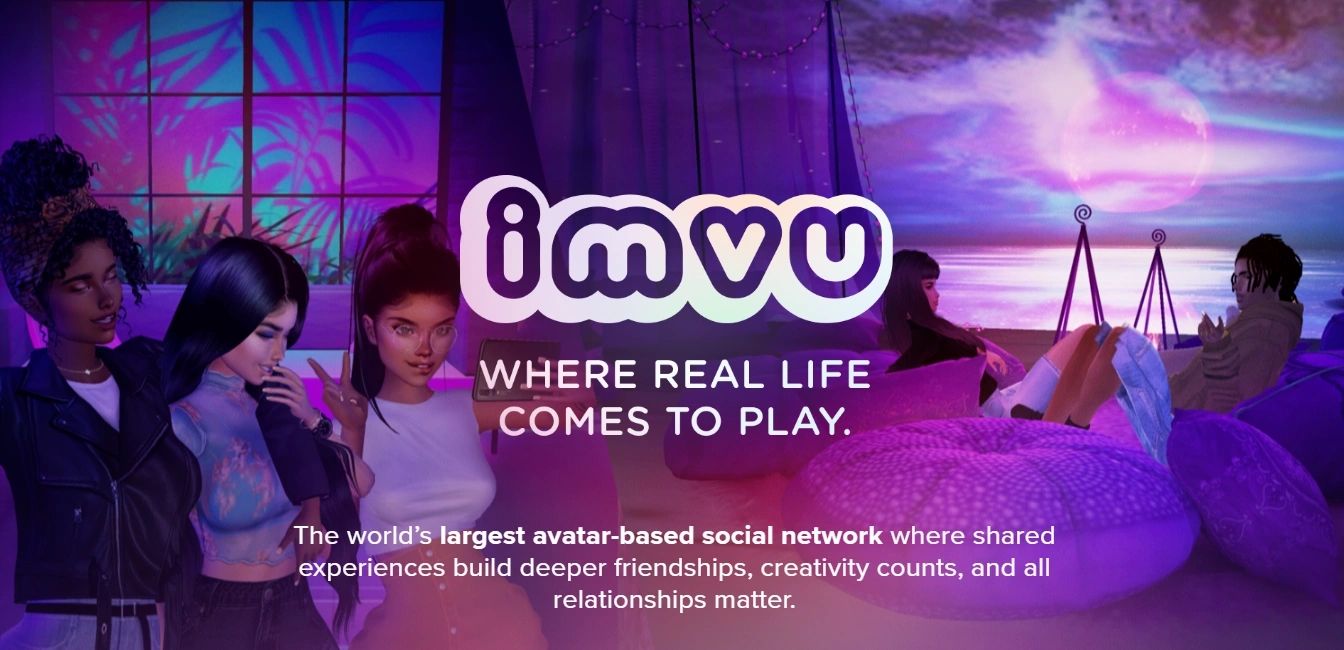
Digital Ethnography and UX Methodology
A Digital Ethnography on the Formation of Romantic Relationships in IMVU
For the completion of my degree in Anthropology and Cultural Studies, I carried out a digital ethnography on the formation of romantic relationships in the virtual world of IMVU. I specifically focused on what the protocols and rules were for this formation and what the parallel was between the construction of a romantic relationship in virtual worlds compared to the offline world. Furthermore, I addressed how virtual spaces impacted the “real world” conceptualisation of romantic relationships, and I analysed how one’s 3D avatar contributed to the construction of these said relationships. Over the period of a year’s research, I developed the argument that the relationships formed in IMVU existed and had constructs, in a spatial and temporal continuum which is positioned dynamically between the concepts of play and actuality. The idea of play, I argued, was associated with the elements of 3D avatar customisation and virtuality, whereas actuality presented itself in the formation of actual offline relationships, emotions and feelings. I encapsulated the premises of this argument in three main themes:
- The Concept of Time and Space;
- The Emulation of “Real Life” and;
- Morality and Ethics
Each of these three areas addressed the dynamic relationship between play and actuality and its impacts on the construction of romantic relationships on the IMVU platform. To get to this stage of research, I conducted an array of different methodologies including, participant observation, semi-structured interviews and conversations, discourse analysis and surveys and questionnaires. Each of these methodologies produced a variety of research data from quantitative and qualitative to exploratory and confirmatory findings. In this article, I will look specifically at applying the methods of participant observation to the practices in UX research.
Participant observation is a research method that has strong ties to anthropology. It works as a useful producer of in-depth qualitative data however, its application to user research is very minimal. Now, I believe that this is due to the simple idea that we are not our users and should not try to be them. Whether you use the product or services you are testing or not, the implicit biases we hold will inevitably skew the findings of our user research. In anthropology, researchers address their positionality, concerning the context and subject of inquiry, which mitigates the production of biases developed through participant observation. Conversely, this courtesy cannot often be afforded to the practices of user research, namely due to business aims and goals and the user—rightly so—being the focus of the research. The implications of introducing participant observation into UX research practices will not outweigh the resources and, frankly, the unnecessary integration of positionality reports. Furthermore, the difference between research produced in anthropology and research produced for user experience is that there is a place for personal linkages to complement one’s work in anthropology as opposed to work in UX. For example, I can incorporate my affinity towards and personal interactions with participants, into my anthropology research, without affecting the overall goals and aims in which I set out to achieve. In user research, this is not so much acceptable as it would affect the validity of the insights produced thus affecting the design, evaluation and implementation process of user-centred design.
So, is there any viable way to incorporate participant observation into user research? The short answer is—it depends. It is dependent on the goals and context of your research enquiry and, additionally, the freedom that you have in your approach to research. If you are conducting a personal user research project, then by all means, experiment with the ways that you can include participant observation and positionality into your practices, while also being aware of the fact that the focus of your research is not you. Although, a very informative and enjoyable method for rich qualitative data extraction, participant observation’s place in the world of UX is a contentious one. However, this does not completely remove its potential to make contributions to other areas of UX as a whole, but for its use in the exploratory and design stages of user research, it may just not be as welcome.
14th August 2020 | Harmony - Head HUXi
Learn More
Head HUXi's first digital ethnography into users experience of forming relationships in virtual worlds. Here she takes a look into the research methodologies used.
Copyright © 2024 HUX Innovation - All Rights Reserved.
Powered by GoDaddy Website Builder